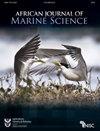The ecology of coastal wetland ponds created by diamond mining in southern Namibia. 2. Saltmarsh vegetation
IF 1.4
4区 生物学
Q3 MARINE & FRESHWATER BIOLOGY
引用次数: 2
Abstract
Diamond mining on the southern Namibian coastline has created multiple large coastal ponds of up to 380 000 m2 adjacent to the coastline, as the sea overtops erected seawalls or seeps into excavated areas. These ponds span ages of 1–38 years. We investigated whether the ponds offer an environment for the establishment, growth and dispersal of saltmarsh vegetation along the coast, which is otherwise devoid of natural wetlands apart from at the Orange River estuary and Lüderitz Bay. Most ponds supported saltmarshes, but they comprised only a single species, Salicornia natalensis. The abundance of this succulent, mat-forming, salt-tolerant plant was greatest around old ponds, but its health decreased with increasing age and hence salinity of the ponds. The orientation of saltmarshes around the ponds was correlated with prevailing wind direction, suggesting that wind determines dispersal of this plant along the coast. However, any saltmarsh communities that have developed will be disturbed by possible future mining activities. In addition, once mining ends, the saltmarshes will become stressed owing to rising salinities as ponds age. Nevertheless, the ponds are capable of supporting saltmarshes for up to 15 years, and new ponds will be created as mining progresses; this offers an ongoing opportunity for the ponds to serve as ‘stepping stones’ in the dispersal and establishment of S. natalensis along the coast.纳米比亚南部钻石开采形成的沿海湿地池塘生态。盐沼泽植被
纳米比亚南部海岸线上的钻石开采在海岸线附近创造了多个面积达38万平方米的大型沿海池塘,因为海水超过了建立的海堤或渗入挖掘区域。这些池塘的年龄为1-38年。我们调查了这些池塘是否为沿海盐沼植被的建立、生长和扩散提供了一个环境,否则除了奥兰治河河口和l德里茨湾没有天然湿地。大多数池塘支持盐沼,但它们只有一个物种,盐角藻。这种多肉、席状、耐盐的植物在老池塘周围的丰度最大,但其健康状况随着年龄的增加而下降,因此池塘的盐度也随之下降。池塘周围盐沼的朝向与盛行风向相关,表明风决定了该植物沿海岸的扩散。然而,任何已经发展起来的盐沼社区都将受到未来可能的采矿活动的干扰。此外,一旦采矿结束,盐沼将受到压力,因为随着池塘年龄的增长,盐度会上升。尽管如此,这些池塘能够支持盐沼长达15年,随着采矿的进展,将建立新的池塘;这为池塘提供了一个持续的机会,作为S. natalensis沿着海岸扩散和建立的“垫脚石”。
本文章由计算机程序翻译,如有差异,请以英文原文为准。
求助全文
约1分钟内获得全文
求助全文
来源期刊

African Journal of Marine Science
生物-海洋与淡水生物学
CiteScore
2.60
自引率
16.70%
发文量
17
审稿时长
6-12 weeks
期刊介绍:
The African (formerly South African) Journal of Marine Science provides an international forum for the publication of original scientific contributions or critical reviews, involving oceanic, shelf or estuarine waters, inclusive of oceanography, studies of organisms and their habitats, and aquaculture. Papers on the conservation and management of living resources, relevant social science and governance, or new techniques, are all welcomed, as are those that integrate different disciplines. Priority will be given to rigorous, question-driven research, rather than descriptive research. Contributions from African waters, including the Southern Ocean, are particularly encouraged, although not to the exclusion of those from elsewhere that have relevance to the African context. Submissions may take the form of a paper or a short communication. The journal aims to achieve a balanced representation of subject areas but also publishes proceedings of symposia in dedicated issues, as well as guest-edited suites on thematic topics in regular issues.
 求助内容:
求助内容: 应助结果提醒方式:
应助结果提醒方式:


